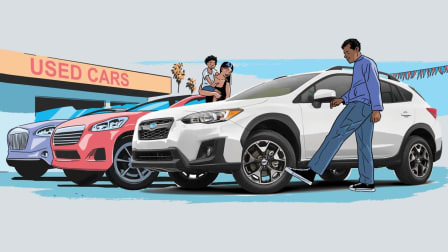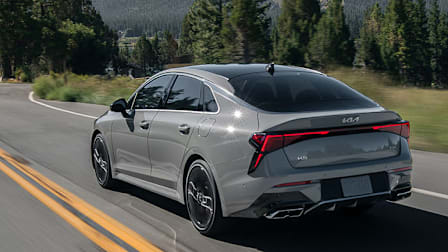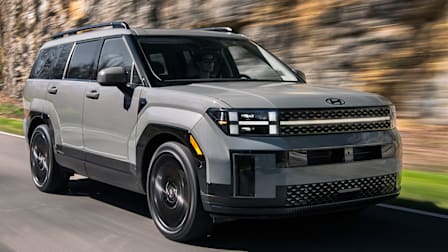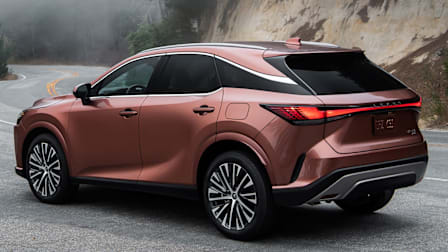Hyundai, Kia Say Vehicles Recalled for Fire Risk Should Be Parked Outside
Over 483,000 more cars and SUVs are part of an ongoing series of fire-related recalls for Hyundai, Genesis, and Kia vehicles
Hyundai and Kia, two automakers that share a corporate parent, have each issued new recalls for vehicles that can catch fire. The recalled vehicles include 2016-2018 Hyundai Santa Fe, 2017-2018 Hyundai Santa Fe Sport, 2019 Hyundai Santa Fe XL, 2014-2015 Hyundai Tucson, and 2014-2016 Kia Sportage SUVs, and the 2016-2018 Kia K900 sedan. According to the automakers—which share parts, designs, and suppliers—owners of these vehicles should park their cars outdoors and away from structures until a recall repair is completed.
Other Hyundai and Kia Fires
Both Hyundai and Kia have issued multiple recalls in recent years that include more than 3.5 million vehicles that may be at risk of catching fire for various reasons. Hyundai Motor Company is the largest shareholder in Kia Motors, with 33.88 percent ownership.
Previous recalls related to fire risk in Hyundai and Kia vehicles involved brake fluid leaks, faulty oil pans, fuel leaks, oil leaks, ABS sensor issues, HECU issues, and engine problems. Both automakers have issued several other recalls for similar HECU-related issues in vehicles, including the Hyundai Santa Fe Sport, and Kia Cadenza, Optima, Sorento, and Sportage.
Hyundai said that it is aware of eight fires related to these latest recalls, and Kia said it knows of three Sportages that caught fire. No injuries or crashes are related to either recall, according to NHTSA documentation.
In 2020, NHTSA announced civil penalties totaling $210 million for Hyundai and Kia after the agency determined that the automakers did not conduct earlier recalls in a timely manner.
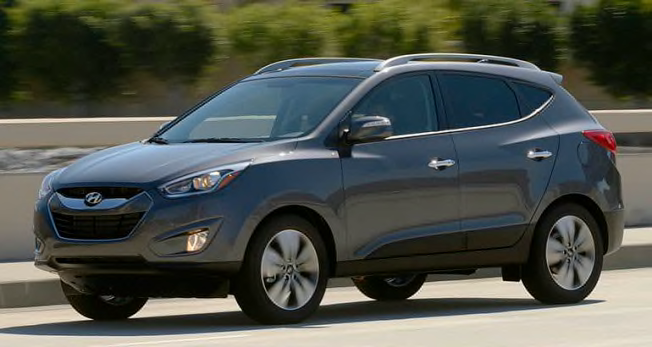
Photo: Hyundai Photo: Hyundai
What to Do If Your Car Catches Fire
If any vehicle you are driving catches fire, here’s what to do, according to experts CR has consulted with.
• First, pull over and shut off the engine. This stops the flow of fuel.
• Get yourself and your passengers out of the car as quickly as possible. Make sure to stay a significant distance away—100 to 150 feet or more—and never go back into the vehicle to retrieve personal property.
• Call 911 or have another motorist make the call to get emergency services on their way as soon as possible.
• Attempt to put out the fire only if you have clear access to the source, have a suitable fire extinguisher, know how to use it correctly, and can maintain a safe distance from the car. Only use an extinguisher approved for Class B or Class C fires; a label on the extinguisher will identify which kind of fire it’s suitable for.
• Never open the hood or trunk if you suspect there’s a fire there; the additional air flowing in could cause the fire to enlarge.
• Be aware of your surroundings. Never stand on an active roadway. If you’re parked by the side of the road, stay far behind the vehicle to avoid being hit if another car strikes your vehicle.
Recall Details
Vehicles Recalled
• 2016-2018 Hyundai Santa Fe SUVs without Smart Cruise Control manufactured between Nov. 2, 2015 and March 12, 2018
• 2017-2018 Hyundai Santa Fe Sport SUVs without Smart Cruise Control manufactured between Dec. 15, 2015 and April 20, 2018
• 2019 Hyundai Santa Fe XL SUVs without Smart Cruise Control manufactured between May 31, 2018 and Nov. 28, 2018
• 2014-2015 Hyundai Tucson SUVs manufactured between Aug. 10, 2013 and May 15, 2015
• 2014-2016 Kia Sportage SUVs manufactured between Sept. 30, 2013 and Nov. 16, 2015
• 2016-2018 Kia K900 sedans manufactured between April 21, 2015 and Nov. 6, 2017
The problem: A component within the ABS system could short circuit and cause a fire. Neither automaker has yet determined the root cause of the problem.
The fix: Dealers will install new fuses in the affected vehicles’ ABS modules, free of charge, to mitigate the risk of a fire.
How to contact the manufacturer: The automakers will contact owners via mail starting in March. Owners may also call Hyundai at 855-371-9460, and Kia at 800-333-4542.
NHTSA campaign number: NHTSA’s number for Hyundai’s recall is 22V056, and Hyundai’s own number is 218. NHTSA’s number for Kia’s recall is 22V051, and Kia’s own number for this recall is SC227.
Check to see whether your vehicle has an open recall: NHTSA’s website will tell you whether your vehicle has any open recalls that need to be addressed.
If you plug your car’s 17-digit vehicle identification number (VIN) into NHTSA’s website and a recall doesn’t appear, it means your vehicle doesn’t currently have any open recalls. Because automakers issue recalls often, and for many older vehicles, we recommend checking back regularly to see whether your vehicle has had a recall issued.

















